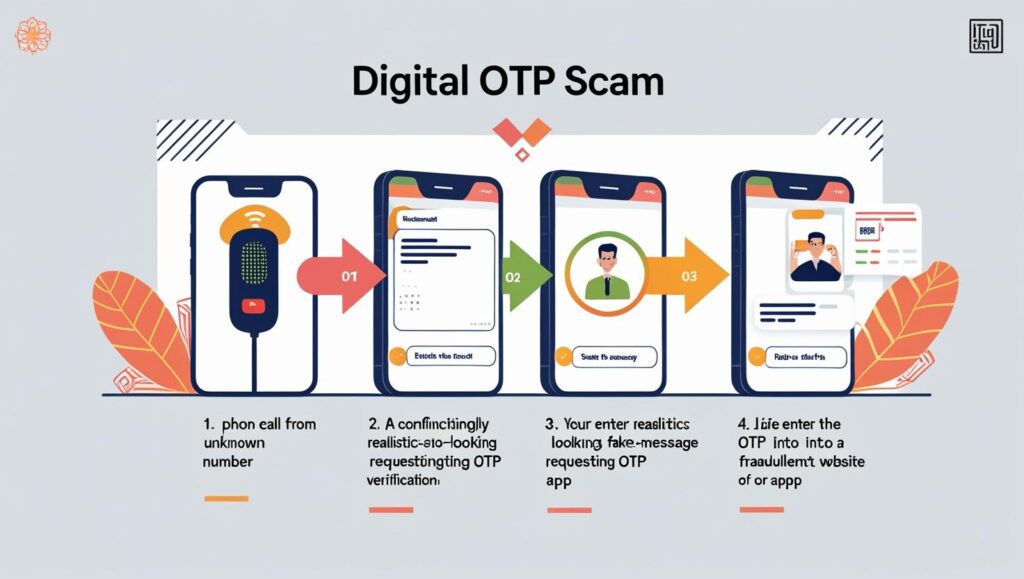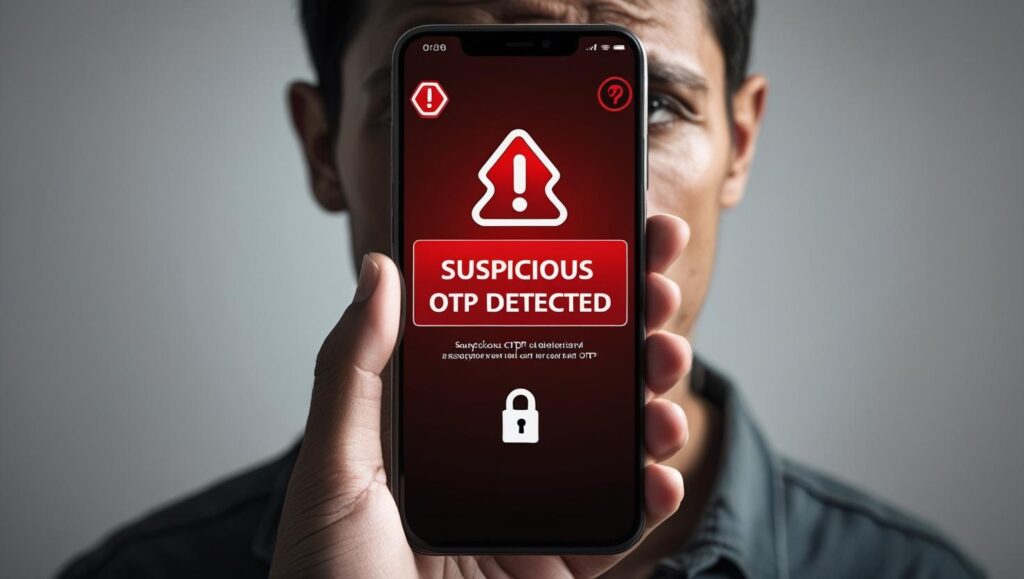India is undergoing a digital revolution. From UPI payments to net banking and mobile wallets, more than 700 million Indians are now connected digitally. However, this connectivity has also created fertile ground for digital OTP scams, a rapidly growing cybercrime trend that has cost users and banks crores of rupees in recent years.
In 2025, OTP (One-Time Password) frauds are among the top five digital financial scams in India. In this blog post, we’ll dive deep into how these scams work, why they are increasing, real-world examples, legal responses, and most importantly — how to protect yourself.

What is a Digital OTP Scam?
An OTP scam is a type of cyber fraud where attackers trick users into revealing the one-time password sent to their phone or email. This OTP is typically required to authenticate sensitive actions like:
Online payments
Fund transfers
Accessing bank accounts
Updating account information
Why OTP Scams Are Increasing in India
Digital Explosion & Low Awareness
The push for Digital India has connected millions, but cyber hygiene hasn’t caught up. Many first-time internet users are unaware of phishing techniques or how cybercriminals operate.
Exploitation of UPI and Mobile Banking
Platforms like Google Pay, PhonePe, and Paytm are OTP-dependent. Fraudsters exploit this by impersonating service providers and tricking users into giving away their OTPs.
Lack of Real-time Cyber Policing
While there are cybercrime cells in every major city, the response time is often delayed, making OTP frauds hard to trace and resolve swiftly.

Common Types of OTP Scams
1. SIM Swap OTP Scam
In this method, scammers gain access to your mobile SIM by convincing the telecom provider to issue a duplicate SIM. Once they have control of your phone number, all OTPs go directly to them.
2. Phishing and Fake OTP Messages
Fake emails or SMS are sent, resembling official messages from banks or payment platforms. They often contain malicious links asking users to verify their account or input OTPs.
3. Vishing Attacks
Voice phishing or vishing is when fraudsters call posing as bank officials or RBI representatives, asking you to confirm your OTP to “secure” your account.
Recent OTP Scam Cases in India (2024–2025)
In early 2025, a Delhi-based entrepreneur lost ₹23 lakh after falling victim to a SIM swap scam targeting his business account.
Cybercrime units in Maharashtra reported a 60% rise in OTP fraud cases compared to the previous year.
According to RBI’s 2024 fraud report, over ₹215 crore was lost to OTP-related cyber crimes.

RBI Guidelines and Legal Measures
The Reserve Bank of India (RBI) has issued detailed guidance on OTP-related frauds. Key takeaways:
Banks must provide real-time fraud alerts and a 24×7 helpline.
Customers should receive educational SMS alerts warning against OTP sharing.
RBI has empowered banks to reverse transactions if complaints are filed within a certain timeframe.
How to Protect Yourself from OTP Scams
1. Never Share OTPs
No bank or government official will ever ask for your OTP. If someone does, it’s a red flag.
2. Use Secure Mobile Connections
Avoid using public Wi-Fi for sensitive transactions. Enable mobile security features like fingerprint lock and app lock.
3. Report Immediately
If you suspect you’ve been targeted, contact your bank and file a complaint at cybercrime.gov.in.
4. Install Verified Apps Only
Fake apps often mimic official platforms. Download only from the Google Play Store or Apple App Store.
What to Do if You’re a Victim
Contact Your Bank Immediately
Freeze all active transactions and request reversal.File a Complaint with Cybercrime Portal
Visit www.cybercrime.gov.inFile an FIR at the Nearest Police Station
Contact Telecom Operator (for SIM-related issues)

Conclusion
Digital OTP scams in India are becoming increasingly sophisticated and widespread. As India moves towards a more digital economy, public awareness and quick action remain our best defenses. Whether you’re a seasoned fintech user or someone new to UPI payments, understanding how OTP frauds work is crucial.
Stay informed, stay alert — and never share your OTP with anyone.
